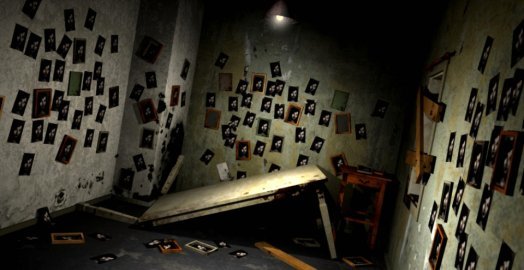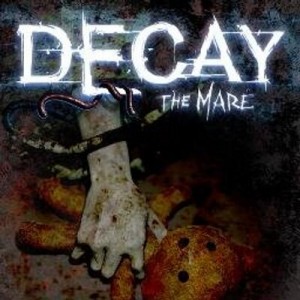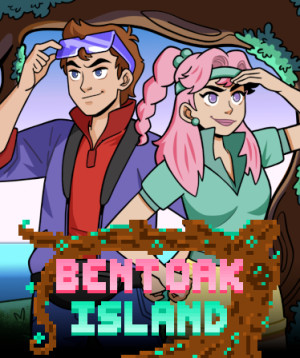Review for Decay: The Mare

The problem with horror video games is they’ve never really grown up. The movie industry occasionally throws out something fresh that grabs the public’s attention, but games seem stuck in the same old asylums, hospitals and graveyards. It’s obvious why these settings lend themselves so well to horror, but at this point that same obviousness weakens their actual impact on the player. Decay: The Mare is no different, losing points for an all-too-clichéd setting, but it earns some back by being an effective little puzzler that triumphs in storytelling and atmosphere, throwing in enough surprises that you’ll likely forgive its cheesier shortcomings.
There’s no escaping the fact that from the outset we’re in familiar territory, in both setting and gameplay. A brief intro video sets the scene: you’re playing Sam, an ex-drug addict who checks himself in to a rehab clinic somewhere unknown. It’s during his stay that dreams and reality start to merge as he finds himself unable to tell whether he’s living in a real life clinic or a Silent Hill-style other world full of whirring fans, industrial looking corridors and barred windows. The opening movie, whilst lacking any voice-over, does a good job of creating the unsettling audio atmosphere that Decay continues to impress with throughout, even if the imagery and style are no different than what you’d expect: hazy VHS images full of close-ups of smiling people in Polaroids, blood spatters and creepy looking rooms. A nice touch for the starting point (your room) is that you need to take the meds on the table before the story commences, giving an interesting ambiguity to the game that follows: is any of this real, or is it a drug-induced dream?
Split over three chapters, the game is played in slideshow-style, a familiar adventuring mechanic since the days of Myst. The images are clear and look pretty good in HD, if a little sparse on detail. You interact by moving the mouse to hotspots and travel by clicking the ever-present but unobtrusive directional arrows when you wish to move; one slide then fades into the next. It’s fairly easy to get around, although the slides are mostly locked-off shots when entering each room, so no matter which door you enter from, you’ll see the same view of the room – it can lead to some disorientation, but the layout isn’t so complex that you can’t get your bearings eventually. Each chapter has a different visual style to help differentiate them from one another. Chapter one is cold and desolate within the dilapidated corridors of the facility; whereas chapter two ups the intensity with a stronger orange palette, suggesting hellish heat as you venture lower in to the building’s bowels and boiler rooms; and finally the third act incorporates elements of the real world, like normal brighter-lit rooms, as Sam begins to get to the bottom of the mystery.
Animations are simplistic – I imagine the budget didn’t cover anything too extravagant – but you will find the odd piece of CGI, usually to punctuate a startling image, or a sudden pan of the camera, which helps to give a bit of life to the otherwise static scenes. As you move out of your room you’ll start exploring the “other world” version of the establishment. Walls are strewn with filth and the building is in disarray. The crux of the story is to try to make sense of this strange dreamlike world you’ve found yourself trapped in. Bit by bit the newspaper clippings and notes you find shed more and more light on Sam’s predicament – nurses not being what they seem to be, strange histories of other inmates and similar shady goings-on.
But of course there is no simple path to the truth. Throughout the corridors and rooms you’ll find all sorts of riddles and roadblocks hindering your progress. It’s important to take note (mentally; there’s no need for a pen and paper) of the things you see – the smallest of clues can help solve a riddle further on in the facility. For example, early on you’ll walk into a room with what seems like just an effective little scare tactic: a wall filled with paintings blinking at you. However, you’ll need to take more notice of them than you might initially think in order to aid your progress later on.
Difficulty is low, so don’t get too bogged down in details; the parts that help solve other parts are clearly linked. You’ll see the usual codes and sequences one would expect in this genre scrawled on walls, photos, etc., but the devices they relate to are fairly obvious when you reach them. This is particularly evident with the only “room maze” (another familiar adventuring mechanic); the directions you need to travel couldn’t have been more obvious if they were signposted. That said, the puzzles are enjoyable, with a high enough sense of achievement that you won’t feel like you’re breezing through them. If you do get stuck, a hint feature will lead you room by room to your nearest objective, or give you a subtle hint about a task to perform in the current room.
Obstacles are mostly logic-based, but the format is varied enough that you won’t feel too tired out by one particular type, and the reward is usually a door opening or an item revealing itself, leading you further into the unfolding story. There are occasional inventory items, but you won’t build up a big collection. There is also some good use of horror staples that lead to effective chills, such as the moment when you’re plunged into darkness and the only way to see is to take photos with your flash camera – you know what’s coming, but the anticipation leads to some good tension. Other items you’ll collect are usually single-purpose items, such as a telescope to read a distant message or a series of coloured balls that have to be placed in the correct order.
There’s a lot of backtracking within each of the three chapters, which can prove a little frustrating, especially in the first, which has the largest map and a requirement to schlep back and forth from start to finish. The chapters are self-contained, though, so once finished you won’t need to revisit anything from them. The story builds coherently as you proceed and weaves an effective little tale of psychosis and paranoia. I can’t give away too much, but suffice it to say the ending draws the threads of the narrative together in a satisfying and comprehensible conclusion without too much reliance on the player making up their own mind – something that can prove disappointing to a lot of us. There are actually two endings, determined by a single choice at the very end, but they don’t affect the story too much, they just create a different fate for Sam.
What Decay lacks in original setting it makes up for in atmosphere, with its highest achievement being its sound design. Right from the opening cinematic, the music is notable in quality. The synth soundtrack is an ominous presence throughout the game, punching key moments and enhancing fraught scenes. It isn’t overused, so when a piece tugging at the heartstrings plays… say, when looking at a sad Polaroid, its appearance makes the scene more poignant. Many lower-budget adventures think they can get away with just a single piece played on a loop, but a lot of effort has been put into using music effectively here. Similarly, the use of sound effects follows the less-is-more philosophy, meaning when you’re supposed to jump, the effects enhance the moment.
There are some other nice touches beyond the audio to make Decay’s horror more effective. The cinematics have some effectively disturbing images, such as a single red filament writhing on the floor, and a character you’ll encounter, named Bag, whose unique design is quite arresting in its macabre originality. I won’t spoil it, but its mix of innocence and grotesque disfigurement will leave an impact that lingers even after the game has ended.
Whilst falling into many of the tired horror (and to a lesser degree, adventuring) pitfalls that we all know and can easily sleep through, Decay: The Mare does manage to do enough right to help it stand out, as its rich use of sound and occasional glimpses of effective horror make it a short but satisfactory little chiller. Running around four hours in total for all three episodes, it isn’t the bulkiest of adventures, but its lighter load is spread effectively across brainteasers, observation puzzles, mazes and inventory obstacles to weave an interesting, coherent and satisfying psychological horror story. Whilst its setting is a little on the putrid side, it’s in the details that Decay comes up smelling of roses.
WHERE CAN I DOWNLOAD Decay: The Mare
Decay: The Mare is available at:
We get a small commission from any game you buy through these links (except Steam).Our Verdict:
Decay: The Mare may fall foul of overused horror tropes, but its occasional impressive flourishes and ability to build atmosphere help raise it above its clichéd premise.



























